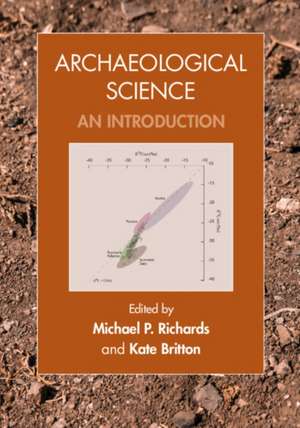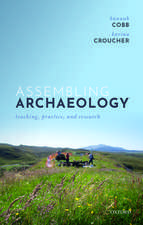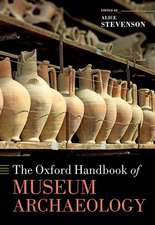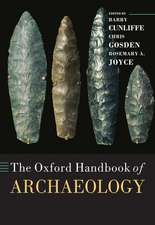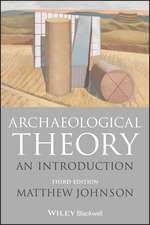Archaeological Science: An Introduction
Editat de Michael P. Richards, Kate Brittonen Limba Engleză Paperback – 15 ian 2020
| Toate formatele și edițiile | Preț | Express |
|---|---|---|
| Paperback (1) | 309.16 lei 3-5 săpt. | +41.89 lei 7-11 zile |
| Cambridge University Press – 15 ian 2020 | 309.16 lei 3-5 săpt. | +41.89 lei 7-11 zile |
| Hardback (1) | 831.76 lei 6-8 săpt. | |
| Cambridge University Press – 15 ian 2020 | 831.76 lei 6-8 săpt. |
Preț: 309.16 lei
Nou
59.16€ • 64.24$ • 49.70£
Carte disponibilă
Livrare economică 01-15 aprilie
Livrare express 18-22 martie pentru 51.88 lei
Specificații
ISBN-10: 0521144124
Pagini: 400
Ilustrații: 54 b/w illus.
Dimensiuni: 172 x 253 x 22 mm
Greutate: 0.95 kg
Editura: Cambridge University Press
Colecția Cambridge University Press
Locul publicării:New York, United States
Cuprins
Part I. Introduction: 1. Introducing archaeological science Kate Britton and Michael P. Richards; Part II. Biomolecular Archaeology: 2. Ancient DNA Liisa Loog and Greger Larson; 3. Proteomics Jessica Hendy, Nienke van Doorn and Matthew Collins; 4. Residue analysis Oliver E. Craig, Hayley Saul and Cynthianne Spiteri; 5. Isotope analysis for mobility and climate studies Kate Britton; 6. Isotope analysis for diet studies Michael P. Richards; Part III. Bioarchaeology: 7. Human osteology Darlene A. Weston; 8. Dental histology Tanya M. Smith; 9. Geometric morphometrics Philip Gunz; Part IV. Environmental Archaeology: 10. Vertebrate zooarchaeology Keith Dobney and Beth Upex; 11. Invertebrate zooarchaeology Marcello Mannino; 12. Palaeoethnobotany A. Catherine D'Andrea; 13. Geoarchaeology Panagiotis Karkanas; Part V. Materials Analysis: 14. Ceramics Andrew J. Shortland and Peter Degryse; 15. Glass Andrew J. Shortland and Thilo Rehren; 16. Metals in archaeological science Thilo Rehren; 17. Lithics Shannon McPherron; Part VI. Absolute Dating Methods: 18. Radiocarbon dating Simon Blockley; 19. Luminescence dating Richard Bailey.
Recenzii
Descriere
This book provides an up to date introduction to the exciting, but complex, new scientific methodologies that are increasingly used in archaeological study. Written by an international team of specialists, it provides clear and engaging overviews of a wide array of approaches, including DNA and proteomics, dating methods, materials analysis, stable isotope analysis, and the scientific study of human, plant, and animal remains, among other topics. Each technique is explored through the use of actual archaeological examples, which both explain the methods and highlight their potential applications. The work is carefully illustrated with useful charts, graphs and other images, which complement the detail in the text, and help to articulate the case studies explored as well as the underlying principles of the techniques involved. Feature tables in many of the chapters highlight selected research on each topic, providing useful summaries of the current state and scope of the field for the reader. This volume will serve as a handy reference tool for scholars, as well as a key textbook for courses on archaeological science.
